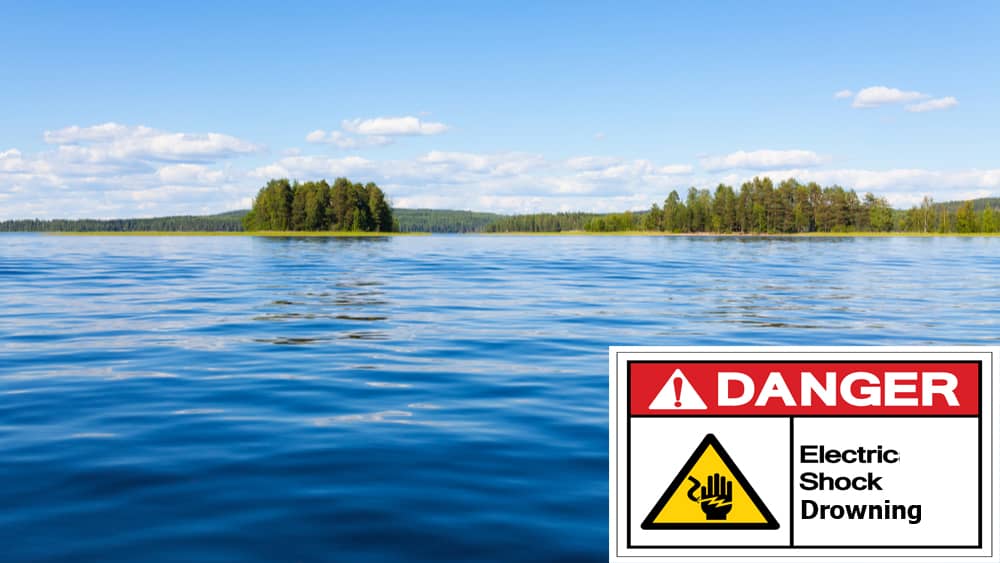
Photo/Image, Shutterstock
NASHVILLE —The Volunteer State’s beautiful lakes, rivers and waterways are perfect places for families, swimmers and boaters to beat the summer heat.
As Tennesseans get their vacations underway, the Tennessee Department of Commerce & Insurance (TDCI) and the Tennessee State Fire Marshal’s Office (SFMO) reminds Tennessee consumers that they can help keep this summer safe by avoiding the potential hazards that could lead to electric shock drowning when spending time at a public marina or dock.
Electric shock drowning occurs when a swimmer unknowingly enters water that has been electrified by a nearby power source such as a boat or a marina. While swimming in the electrified water, the swimmer is paralyzed by the electric current before drowning.
To reduce the risk of electric shock drowning deaths in Tennessee, the Tennessee General Assembly passed the Noah Dean and Nate Act, which was named after Noah Dean Winstead, 10, and Nate Lynam, 11, who died July 4, 2012, after being electrocuted while swimming at the Cherokee Lake marina.
The Act requires that all of Tennessee’s public marinas and docks be inspected by the SFMO. As part of the legislation, marina and boat dock operators must comply with equipment requirements preventing possible electrical shocks and electrocution. A new video highlights the work by the SFMO team to inspect marinas and docks and shares tips on avoiding electric shock drowning.
“Ensuring the safety of Tennessee residents and visitors whether on land or on public waters is the top priority of the Tennessee State Fire Marshal’s Office,” said TDCI Assistant Commissioner for Fire Prevention Gary Farley. “In addition to having some of the country’s most beautiful waters, our marina inspection program has helped improve the safety of Tennesseans when they spend time on the water.”
To aid consumers, the SFMO posts a list of inspections of Tennessee public marinas, harbors and docks. By law, marina inspections by the SFMO occur every five years. A list of the most recently completed inspections can be found here.
As a reminder for families and boat owners, the SFMO shares these tips to help avoid electric shock drowning. When visiting a dock or marina, remember:
IN MARINAS:
- Never swim within 100 yards of any freshwater marina or boatyard.
- Talk to marina owners or operators about the dangers of electric shock drowning. If required signs are not posted, ask your marina operator to post signs prohibiting swimming at their facility or contact the SFMO to file a complaint.
IF YOU HAVE A BOAT:
- Have your boat tested once a year to see if it is leaking electricity or buy a clamp meter and test it yourself. If you find any problems, have your boat inspected by a qualified electrician trained to American Boat and Yacht Council (ABYC) standards. Have a qualified ABYC electrician install an Equipment Leakage Circuit Interrupter (ELCI) on your boat (refer them to the ABYC E-11Standard) or use an ELCI in the shore power cord. As an alternative, install an isolation transformer on the boat.
- Test ELCI at least once a month or per the manufacturer’s specifications.
- Do not hire an electrician who is not familiar with ABYC standards to install electrical equipment on your boat. Many of the problems that lead to electrical faults result from the differences between shore and boat electrical systems and standards.
- Do not use common household extension cords for providing shore power to your boat. Use, and encourage other boaters to use, shore power cords built to Underwriters Laboratories (UL) standards.
- Never dive from your boat to work on underwater fittings when the boat is plugged in to shore power.
IF YOU HAVE A PRIVATE DOCK:
- Never swim within 100 yards of any dock using electrical power.
- If you have not electrified your dock or put an air-conditioning system on your boat, weigh the risks carefully before doing so.
- If you need electricity on your dock, hire a licensed electrician and make sure the wiring meets the requirements. If your dock is already wired, hire an electrician to check that it was done properly. Because docks are exposed to the elements, their electrical systems should be inspected at least once a year.
- If you normally run a power cord from your house or garage to charge your batteries, make sure the outlet has a GFCI and include an ELCI somewhere in the shore power cord.
- Never swim off your dock without shutting down all shore power to the boat and the dock.
- Even if you adhere to all of these rules, nearby docks can still present a shock hazard. Educate your neighbors and work together with them to make the waterfront safe.
IF YOU’RE IN THE WATER AND FEEL TINGLING OR SHOCKS:
- Do not follow your instinct to swim toward the dock.
- Let everyone know what’s happening so they’ll understand the danger and react appropriately.
- Try to stay upright and back out of the area the way you came. Warn any other swimmers in the area of the danger, and then head for shore 100 yards or more from the dock.
- Alert the dock or marina owner and tell them to shut the power off to the dock until they locate the problem and correct it.
- Go to the hospital to make sure there are no lingering effects that could be dangerous.
IF YOU HAVE TO RESCUE AN ELECTRIC SHOCK DROWNING VICTIM:
- Know how to distinguish drowning from electric shock drowning. Tingling, numbness and pain all indicate electric shock drowning.
- Fight the instinct to enter the water. Many rescuers have died trying to help electric shock drowning victims.
- Call for help. Use 911 or VHF Channel 16 as appropriate.
- Turn off the shore power connection at the meter base and/or unplug shore power cords.
- Get the victim out of the water.
- If the person is not breathing or you cannot find a pulse, perform CPR until the local fire department or emergency responders arrive.






